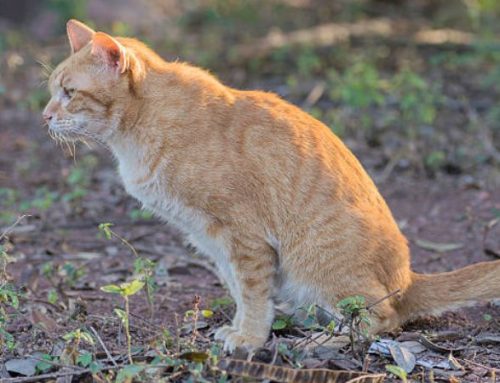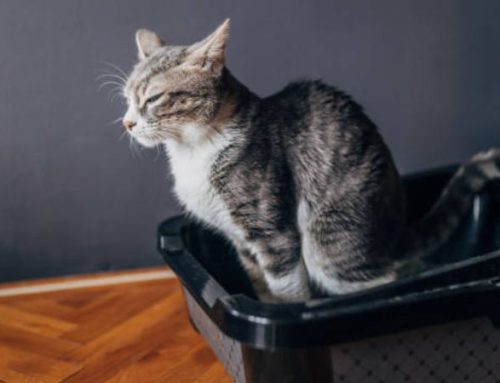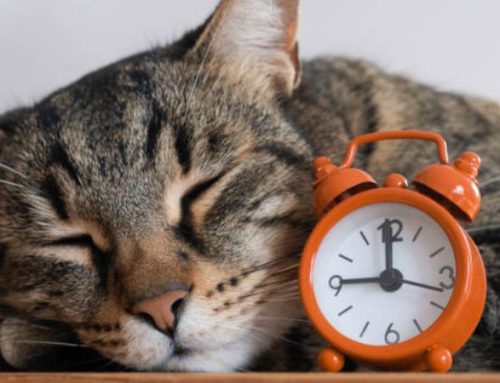When your cat starts scratching more than usual, it’s easy for your mind to jump to one big worry: lice. But before panic sets in, let’s clear the air. Cat lice are annoying, yes, but they’re not the nightmare you might imagine—and no, they won’t be jumping from your cat’s fur onto your head. In this guide, Nexus-Pets breaks down everything you need to know about cat lice, from how they spread to whether they pose any risk to you.
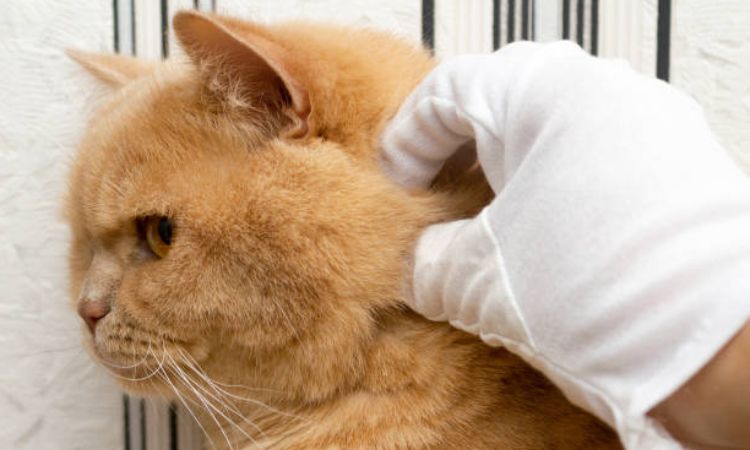
The Short Answer – Cat Lice and Humans
Can cat lice transfer to humans? The simple answer is no, they can’t. Cat lice, scientifically known as Felicola subrostratus, are host-specific parasites, which means they can only survive, feed, and reproduce on cats. Unlike human head lice (Pediculus humanus capitis), they are biologically adapted to their feline hosts and cannot infest people.
So, if you’re worried about catching lice from your cat, rest assured—it’s not possible. However, maintaining good hygiene and regular pet care is still essential. Treating your cat promptly for lice not only keeps them comfortable and healthy but also prevents potential secondary issues, such as skin irritation or infections caused by excessive scratching.
Understanding Cat Lice vs. Human Lice
When it comes to tiny pests, not all lice are created equal. Cat lice and human lice may look similar at first, but they are entirely different creatures, each adapted to its own host. Understanding these differences is essential for protecting your feline friend while knowing your household remains safe from cross-species infestations. Here’s a quick breakdown:
- Species: Cat lice are known as Felicola subrostratus, whereas human lice include Pediculus humanus capitis (head lice) and Pediculus humanus corporis (body lice).
- Appearance: Cat lice tend to be small, flat, and light-colored, perfectly suited for clinging to fur. Human lice are slightly larger, with a shape and coloration adapted to human hair or clothing.
- Host Specificity: Each type of lice is highly specialized, meaning cat lice cannot infest humans, and human lice cannot survive on cats.
- Visual Identification: Knowing what cat lice look like—tiny, wingless insects with six legs that grasp hair—makes early detection much easier and helps prevent infestations from spreading among pets.
Identifying a Cat Lice Infestation
Recognizing a lice problem early is essential to prevent discomfort and potential skin issues in your cat. Lice infestations, though less common than fleas, can cause noticeable distress if left untreated. Paying attention to your cat’s behavior and physical signs can help you catch an infestation promptly.
Symptoms in Cats
Lice irritate your cat’s skin, and the following signs may indicate an infestation:
- Itching and Scratching: Cats may bite or rub themselves more than usual, especially around the neck, ears, and groin.
- Restlessness: Frequent grooming or agitation is a subtle clue that your pet may be experiencing irritation.
- Hair Loss or Matted Fur: Patches of missing hair or clumped fur often appear in areas hard for the cat to reach.
- Skin Irritation and Small Scabs: Persistent scratching can lead to red, inflamed patches or tiny scabs.
What Does Cat Lice Look Like?
Visual inspection is the most reliable method to confirm lice. Here’s what to look for:
- Tiny Wingless Insects: Adult cat lice are flat, six-legged insects that move through the fur close to the skin. Their claws allow them to cling tightly to hair strands.
- Cat Lice Eggs (Nits): Female lice lay small, white, oval-shaped eggs that are firmly attached to hair shafts near the scalp. Unlike dandruff, nits do not brush off easily and remain glued to the fur.
- Movement: If you part your cat’s fur, you may notice small insects crawling actively along the skin. Using a magnifying glass or fine-toothed comb can make detection easier.
By combining observation of behavior, coat condition, and careful visual checks, you can accurately determine if your cat is dealing with lice. Early identification allows for timely treatment, reducing discomfort and preventing the infestation from spreading to other pets.
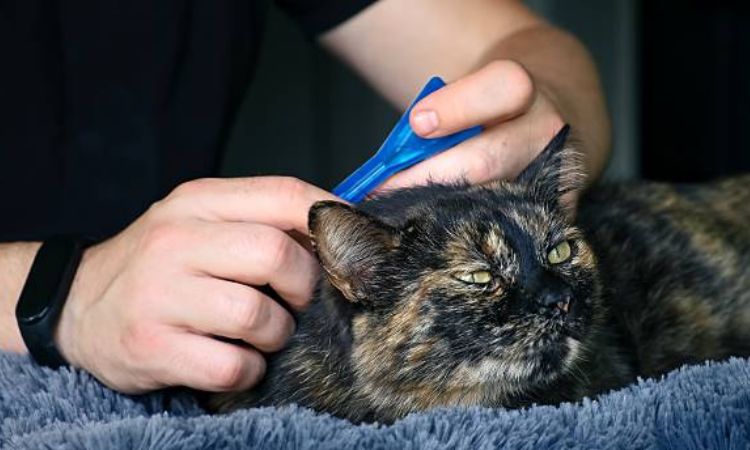
Cat Lice Treatment and Prevention
Lice infestations in cats, while less common than fleas, can cause significant discomfort and skin irritation. Addressing the problem promptly with both treatment and preventive measures ensures your cat’s health and comfort.
Professional Treatment
Consulting a veterinarian is the safest and most effective approach for treating cat lice. A professional can confirm the diagnosis, rule out other skin conditions, and recommend the most appropriate treatment. Common vet-approved options include:
- Topical Spot-On Treatments: Medications like selamectin, fipronil, or imidacloprid effectively kill lice at various life stages.
- Medicated Shampoos: Special anti-parasitic shampoos can help remove lice and soothe irritated skin.
- Sprays and Dusts: In some cases, vet-recommended sprays or powders may be applied to the fur to eliminate lice.
Home Treatment & Care
While professional guidance is essential, careful at-home care can support treatment and prevent reinfestation.
- Grooming: Regularly comb your cat with a fine-toothed lice comb to remove adult lice and nits. Focus on tricky areas such as the neck, ears, armpits, and groin.
- Environmental Cleaning:
- Wash bedding, blankets, and soft toys in hot, soapy water.
- Vacuum furniture, carpets, and hard flooring thoroughly.
- Disinfect grooming tools, collars, and other accessories.
- Important Disclaimer: Never use human lice treatments on cats, as they are toxic and can be life-threatening. Only use products labeled as safe for felines, ideally under veterinary supervision.
Prevention
Preventing lice infestations is easier than treating them. Key steps include:
- Regular Vet Check-Ups: Ensure your cat receives routine examinations to catch potential infestations early.
- Flea and Tick Preventatives: Many vet-recommended products also protect against lice when used monthly.
- Maintain a Clean Environment: Frequent cleaning of bedding, grooming tools, and living areas helps minimize the risk of parasites.
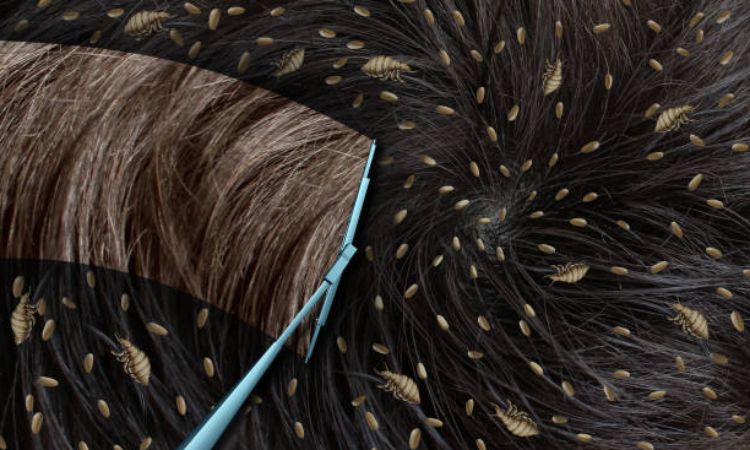
The Reverse Question – Can Pets Get Lice from Humans?
Many pet owners worry about the possibility of transferring lice to their furry friends. Rest assured, this concern is largely unnecessary. Lice are highly species-specific parasites, meaning each type of lice has evolved to survive on a particular host.
- Host Specificity: Human lice (Pediculus humanus capitis for head lice and Pediculus humanus corporis for body lice) are adapted exclusively to humans. They cannot survive, feed, or reproduce on cats, dogs, or other pets.
- No Cross-Infestation: Just as cat or dog lice cannot infest humans, human lice will not infest your pets. There is no risk of your pet “catching” head lice from you or any other person.
- Reassurance for Pet Owners: While it’s important to maintain good hygiene and routinely check your pets for parasites like fleas or lice, you do not need to worry about human lice affecting them.
You can breathe a sigh of relief. Cat lice are highly host-specific and cannot live on or infest humans. While finding any type of parasite on your pet can be alarming, a cat lice infestation is a problem that can be effectively solved with the right veterinary care. By understanding the signs of cat lice and seeking professional guidance for treatment, you can ensure your feline friend stays healthy and parasite-free.


